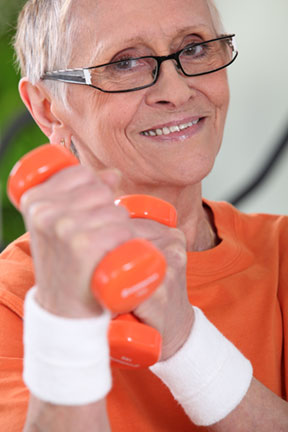4 Basic Exercises to Help Older Adults Improve Strength and Balance

"The great thing is, no matter what your age, size or fitness level, it's never too late to start exercising," said Jaza Marina, M.D., a Kaiser Permanente physician who specializes in elder care. "We strongly recommend seniors do exercises that maintain strength, balance and flexibility. Our goal is to reduce their risk of falls and injuries, so they can stay healthy and independent."
Dr. Marina advises that good ways to exercise include low-impact aerobic activity, swimming, tai chi and yoga if you're physically able. "We have 80-year-olds who run 5k or 10k races. Everyone is different, so pick an exercise that you enjoy."
She believes walking is probably the easiest exercise. All you need is 30 minutes a day, five times a week. If that's too much, you can break that up -- 10 minutes in the morning, 10 in the afternoon, and 10 in the evening. Some seniors walk at their local indoor shopping mall.
"The important thing is to get off the recliner, turn off the T.V. and get active," said Dr. Marina. Below are four basic exercises to get you started.
1. Knee bends. Holding on to a sturdy chair or counter at your side, keep your back straight, feet on the ground and gently bend your knees and lower your body. Then, raise your body back up. It's a slight squat but not a deep one. Repeat 10-15 times.
2. Heel raises. Holding on to a chair or counter at your side, raise up on toes slowly and then lower the heels to the ground slowly. Heel raises strengthen the calf muscles. Repeat 10-15 times.
3. Side leg raises. Holding on to a chair or counter at your side, raise one leg out to the side and bring it back down. Repeat 10-15 times and switch to other leg.
4. Sit to stand. If you're able -- sit in a chair and rise to a standing position with arms stretched in front of you. Make sure the chair is in a stable position or against a wall so it won't fall over. Sit back down and repeat 10 times.
Kaiser Permanente offers exercise classes at several of its medical facilities. To find classes in your area and for further information about these exercises, visit kp.org. Also, talk with your physician before starting a new exercise routine.

No comments: